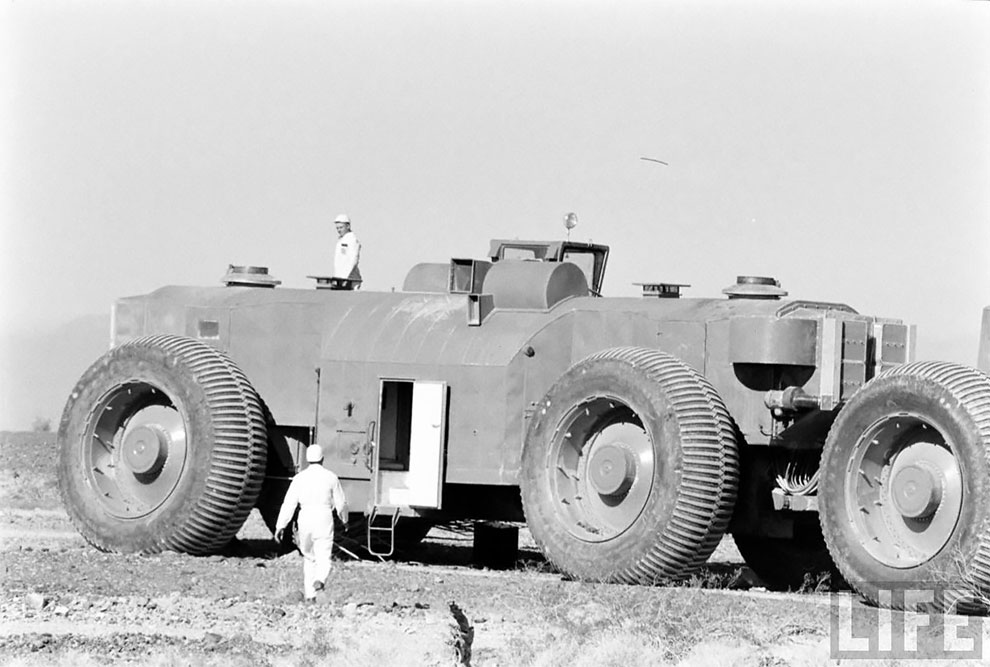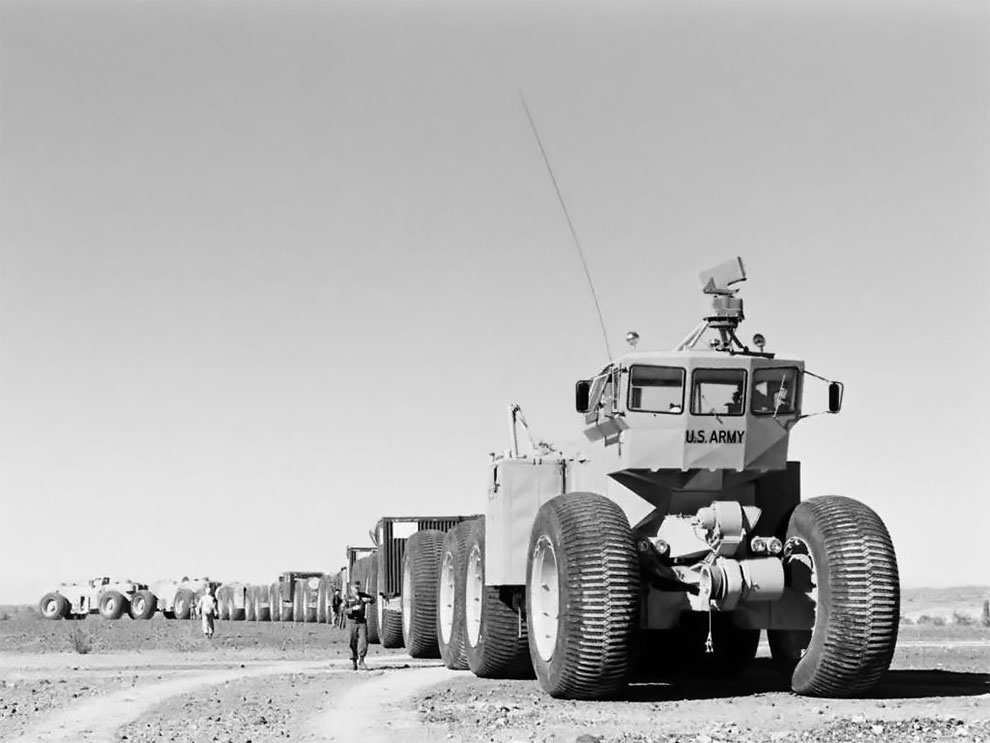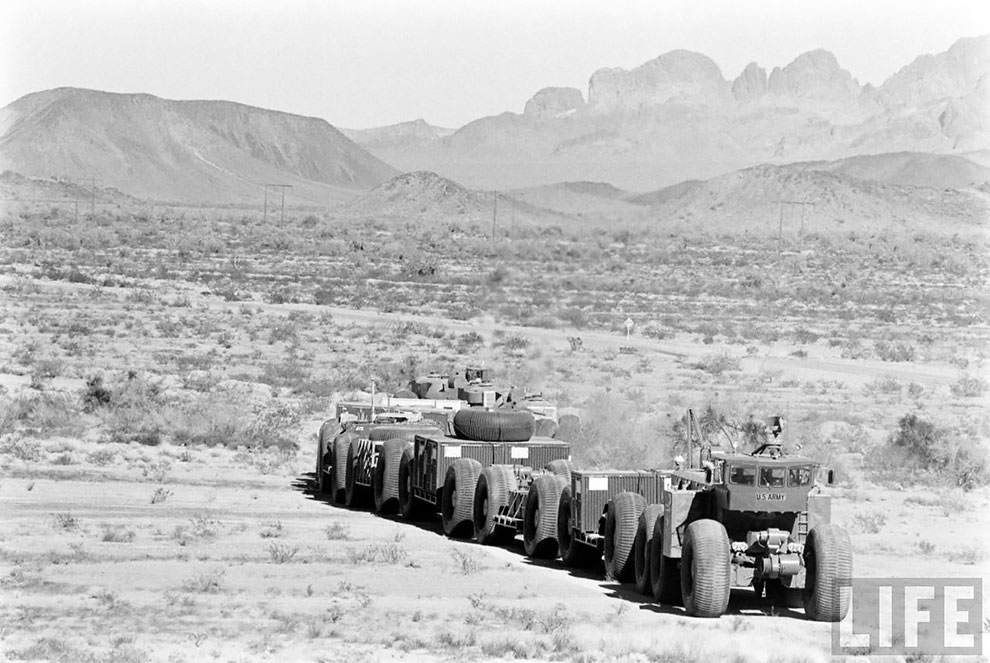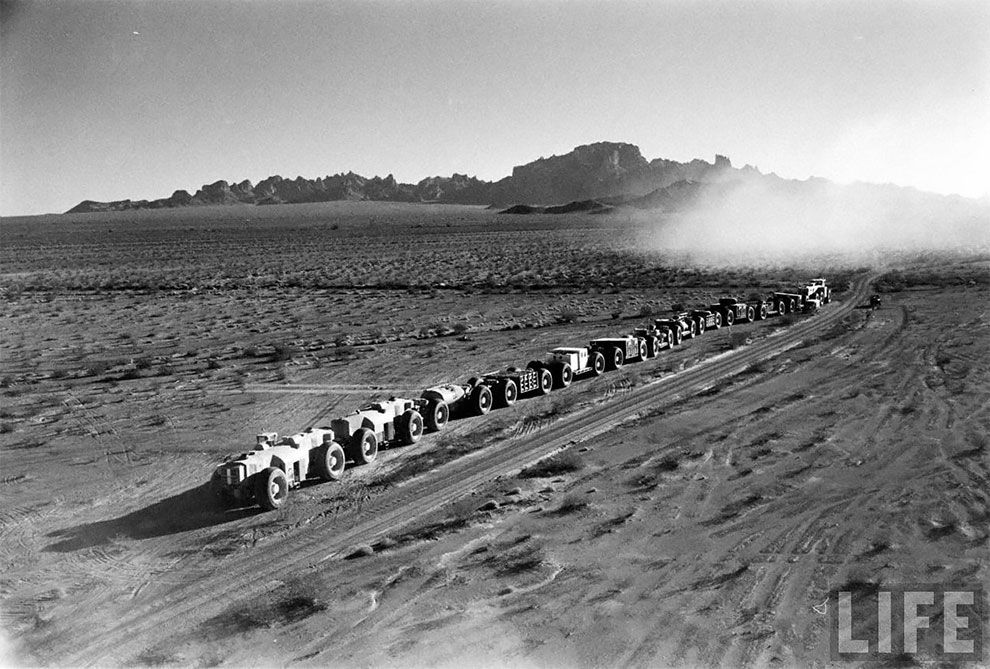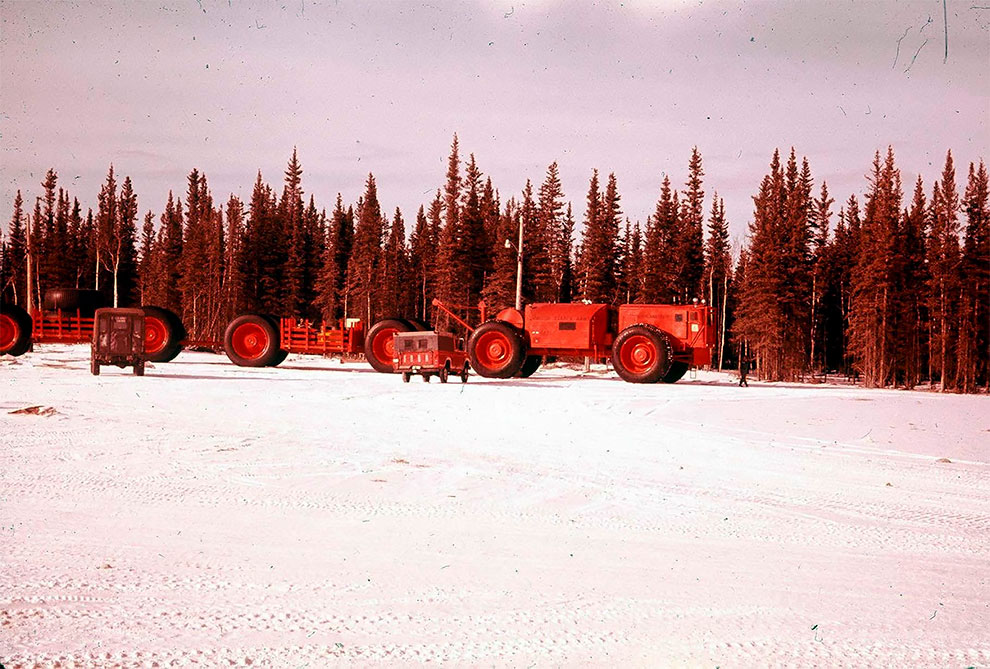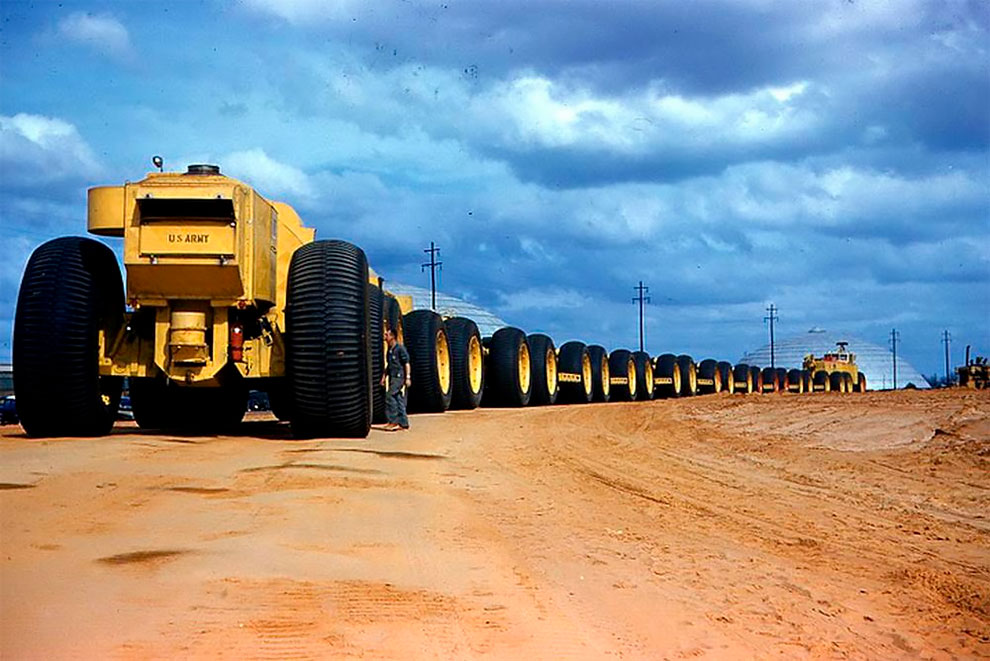Amazing Vintage Photographs Of The TC-497 Overland Train Mark II, The Longest Offroad Vehicle In The World

In the early 1950s, LeTourneau, Inc., a heavy-equipment maker based in Longview, Texas, developed the idea of using a diesel-electric transmission to drive multi-wheeled vehicles. Each wheel was driven by a separate electric motor, which gave the vehicles much better traction as the force of the engine was spread across a number of wheels.
h/t: vintag.es

In general terms these vehicles were similar to the diesel-electric locomotives that were being widely introduced by the railways at the same time, but they replaced the steel wheels with rubber ones. The earliest vehicles using the system were a number of 6×6 graders, wheel tractor-scrapers and other earthmovers.

Following the successful of LCC-1, in 1958 the U.S Army contracted for a larger version, the TC-497 Overland Train Mark II. Generally similar to the LCC-1 in concept, the Mark II included a number of features to allow the train to grow to any length. This massive Overland Train had four 1,170-hp Solar 10MC turbine engines. Each wheel was powered electrically and maximum speed was about 20 mph under full load.

The massive cab supported a crew of (up to) six along with a galley, bathroom and sleeping quarters. The main car was over 30-feet tall. At it final, maximum length, the LeTourneau TC-497 Overland Train Mark II measured over 570-feet long. If needed, they could add additional trailers. Range was between 300 and 400 miles under load.

The LeTourneau TC-497 Overland Train Mark II had several advantages over its predecessors including the ability for each trailer to power-steer itself. Rather than suffer from the arc of a turn reducing itself, each trailer would turn when signaled. This allowed the LeTourneau TC-497 Overland Train Mark II to negotiate fairly tight turns.
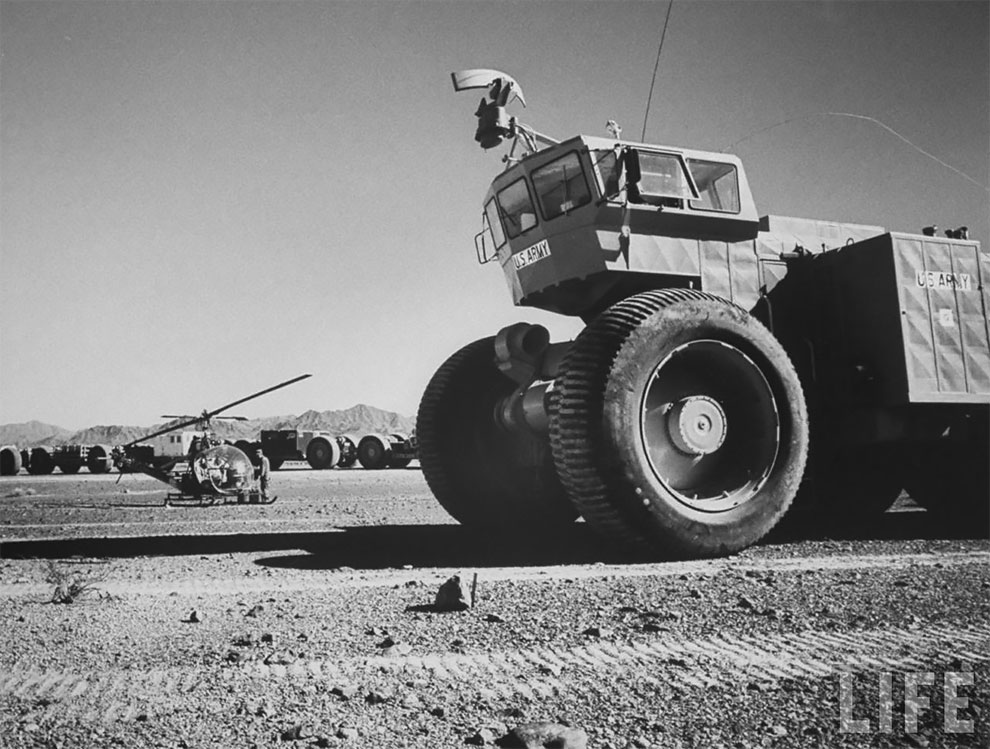
Completed in 1961 (after extensive testing in the desert and snow), the LeTourneau TC-497 Overland Train Mark II was ready. While it performed well, it was retired before it could reach its potential. Heavy-lift helicopters were perfected and it rendered the massive vehicle obsolete.
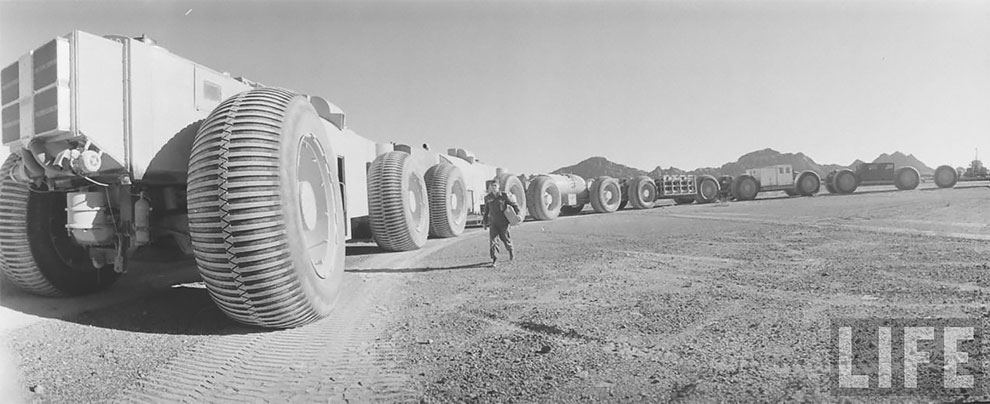
Sadly, there are no working versions of any of the LeTourneau overland trains out there. Some are rusting in Alaska while a LeTourneau LCC-1 Sno-Train is on display at the Yukon Transportation Museum in Whitehorse, Alaska.
